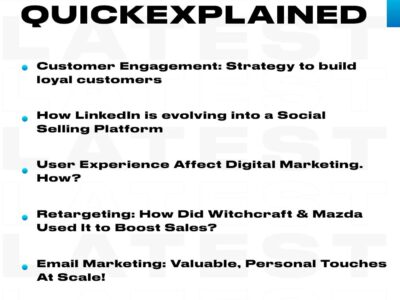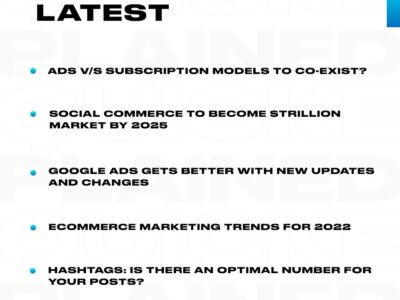Small businesses target specific audiences. That makes local marketing powerful for such businesses. So the key is to optimize your local search otherwise your potential customers will go away. However useful, its impact can be realized with effective use.Â
Did you know that at the start of 2021, over 70% of small businesses had their own websites? That’s an exponential jump from around 50% in 2018. It is a testimony of how necessary digital presence is for small and local businesses. These companies rely on SEM and SEO strategies to keep growing online, which include enhancing their website performance.
Important is to reach the right customers and beat the competition. Apart from that, knowing the right marketing channels and strategies that have a profitable impact on the relevant customers is the key. On-page optimization for local search results, Online reviews, Quality local links and citations are some examples. Small and local businesses want to maximize profits by tapping into specific communities in regional areas – typically 50 miles within their stores’ physical location.
What Is Local Marketing, and Why Is It Important?
Local business search marketing means highly targeted campaigns for a well-defined audience within a small physical radius. In contrast to global marketing, where there is no limit on the audience, ‘neighborhood marketing’ focuses on a specific community that will actually buy the products and services. Some examples of local marketing clients are single location stores, e-commerce stores, local restaurants, plumbers, carpenters, and other local service providers.
Recent survey findings highlight the change in consumer behavior due to the pandemic. More than 50% of sales will happen online in the post-pandemic world – hence businesses must operate online across multiple platforms and social commerce to survive with growing online marketplaces and social platform commerce. More and more people will type “services near me†– making business search marketing strategies to go local, in fact, hyperlocal.
Top Digital Marketing Tips for Local Businesses
To grow visibility of your business local search heavily relies on SEO,local content, online reviews, directories and other related tools that provide apt information for local users.Â
- Local SEO and Website Optimization
- Get Customers Talking about You through Reviews
- Well-designed Paid Advertising Campaigns
- Go beyond Google – Try Other Online Directories
- Talk about Your Business through Blogs
1. Local SEO and Website Optimization
Digital marketing relies heavily on SEO. It becomes even more crucial in localization. You have to be on top of the search results and generate organic visits for any local search involving your services or products. The best way is to have a Google Business Profile (earlier known as Google My Business Account). A Google Business Profile allows you to use Google search and maps, show your local inventory, and interact directly with the customer via chats and review responses.
Besides having a robust and up-to-date Google Business Profile, you must ensure the website is optimized for local searches. Go absolutely local – include keywords that involve your services and the locality. Specially curated website blogs and vlogs can help bring in more traffic. Plus, local searches are mostly done through mobile – hence, focus on making your website mobile-friendly.
2. Get Customers Talking about You through Reviews
Once you search for something online and get top results, what’s the next step you take? You check the overall ratings, read reviews to see if the services are good enough for you. You may have the best business profile, with everything mentioned clearly. However, if there are no reviews, it becomes challenging for a new customer to build trust. Asking for reviews and genuine feedbacks and answering relevant queries will make your local business’s online presence worthy.
Other key strategies include having an active social media presence, incentivizing customer interaction through special offers and giveaways, and getting your name to appear on local media houses.
3. Well-designed Paid Advertising Campaigns
You cannot solely rely on organic reach in the digital space. Paid marketing is beneficial for local businesses, just like global businesses. Depending on the marketing budget, you can choose one or a combination of Google Ads, interactive social media ads, PPC (Pay-per-click) campaigns, and Facebook hyperlocal ads. Social media has loads of user data, including their preferences and behavior, making them the best choice for highly targeted local marketing.
4. Go Beyond Google – Try Other Online Directories
Google runs the show in digital marketing and search optimization. However, it doesn’t mean your marketing strategies shouldn’t include other players. There are plenty of other online directories like Yellow Pages, Bing Places, Yelp, HotFrog, etc., that can bring you immense traffic. Additionally, identify the popular online directories that best suit your industry. For example, if someone wants to plan travel, they would rely more on a TripAdvisor review than a Google rating. Overall, ensure your business is listed on as many online directories as possible.
5. Talk About Your Business Through Blogs
Blogs are a must for generating leads and interacting with your audience.Â
Websites with blogs generate almost 70% more leads than those without blogs. Most digital marketers ignore that blogs are a super-effective SEO tool to build website authority. Never forget to add exciting and engaging blog content to your local business search marketing strategy.Â
Marketing strategies for local businesses are highly effective if targeted at the right audience & use the right channels. Combining locally relevant marketing strategies and setting up an optimized website and incorporating various SEO tools, reviews, blogs & vlogs will increase the visibility of your business and create a strong bond with your potential customers.








Comments